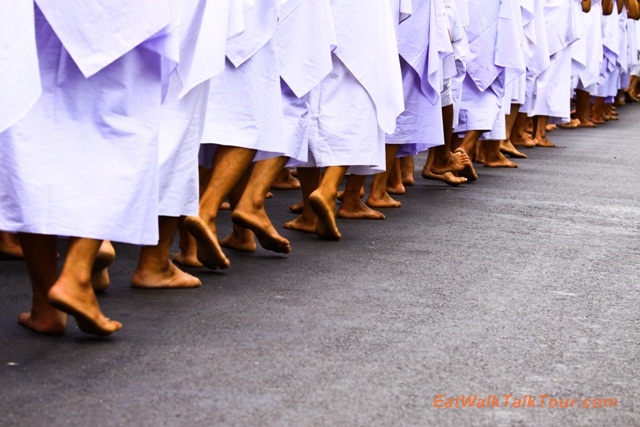Why the Thai visit temple?
Visit Bangkok temple is one of the best ways to learn about Thai culture. Temples are a spiritual center. Thai people go temple for many activities such as gain merit making ( offering food to monk , paying , and release animal) , learning discipline, fortune forecast, medical advise, family consultation, learning meditation and etc. Thai people visit the temples to various propose and expectation. Many don’t know why, but they feel good about it. That is good enough reason to go there, isn’t it.
Which Bangkok temples worth to visit?
Bangkok has over 400 temples. The temple has different size and amount of Buddhist monk living in. There are two distinguishing category which consists of temple built by royal or local people. The royal temples are the best in term of historical and architectural. It is more elaborate with nice decoration.
The most outstanding Bangkok temple
Wat Pho (Reclining Buddha temple) :
the home of Thai massage and has one of the best reclining Buddha dwellings. The reclining Buddha is 48 meters long, the second biggest reclining Buddha in the country. However, this is the masterpiece Buddha statue with mother of inlaid decoration on the food which everyone should see.
More detail to temple tour :
Wat Aroon (the temple of dawn):
This is one of the landmarks of Bangkok. The tall tower is located next to the river outstanding from far direction. It was a main royal temple during the Thonburi period. The tall tower is called Pra Prang which decorated with ceramic and bowl, from the Chinese trade. It is worth to clam up to the top to see the view of old Bangkok area.
Visit wat Aroon with canal tour :
Wat Trimirt (Golden Buddha temple) :
This is the only temple built by commoner. To visit this temple you will see Buddha image made of 5.5 ton of solid gold with your own eye and the story of this temple from the local guide
Wat Suthatthepwararam :
The temple is ideal place use as epicenter of universe. The main hall has 700 years old Buddha statue made of bronze. The temple area is well decorated with Chinese statues make it outstanding landscape. Not many tours bring customers here. If you like mural painting, non-touristy place or place to practice meditation in the evening you can consider this place (check our website , for idea of activities in Wat Suthat.)
Wat Benchamaborpit (Marble Temple) :
This is the temple where the eastern and western architecture meet. The main hall uses marble from Italy. The layout of the hall is in the northern Thai Style and reproduction of Buddha chinnarat. If you want to join offering food to monk in the morning at 06.00-07.00 or monk chanting around 09.00 , this is a place for you.
We operate the temple tour to make thing easy for your visit. Chick for more detail.
